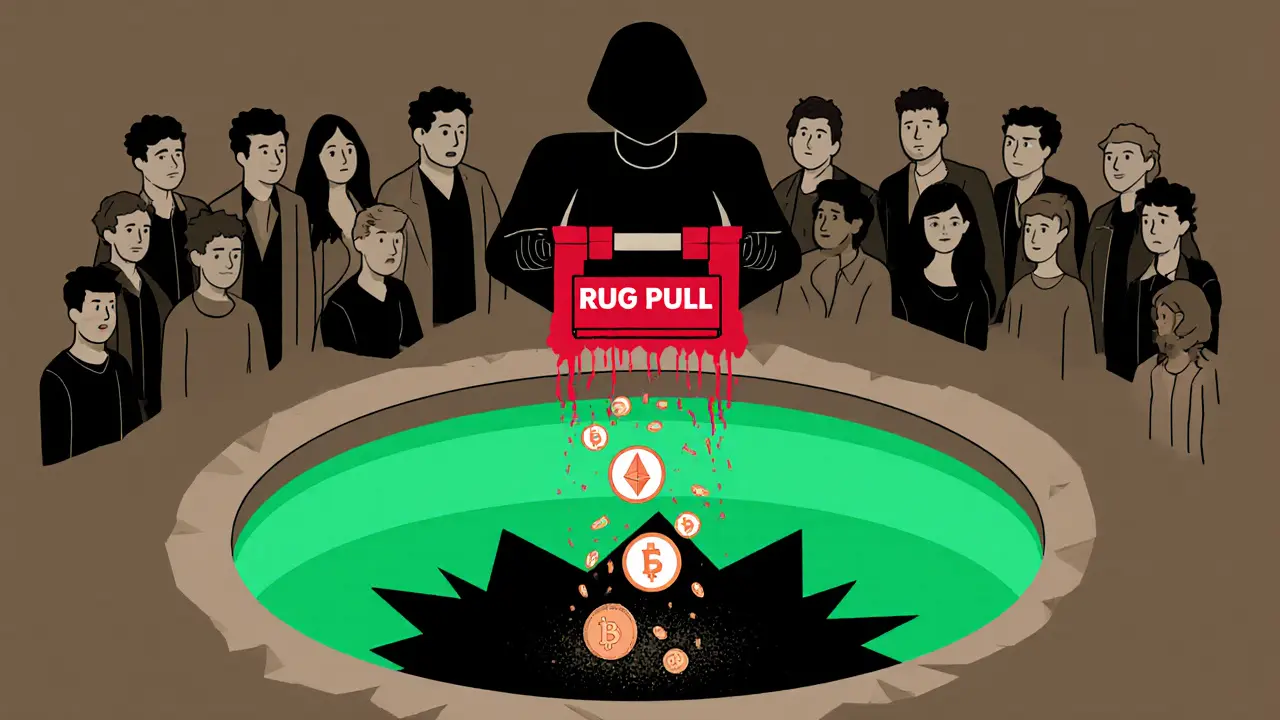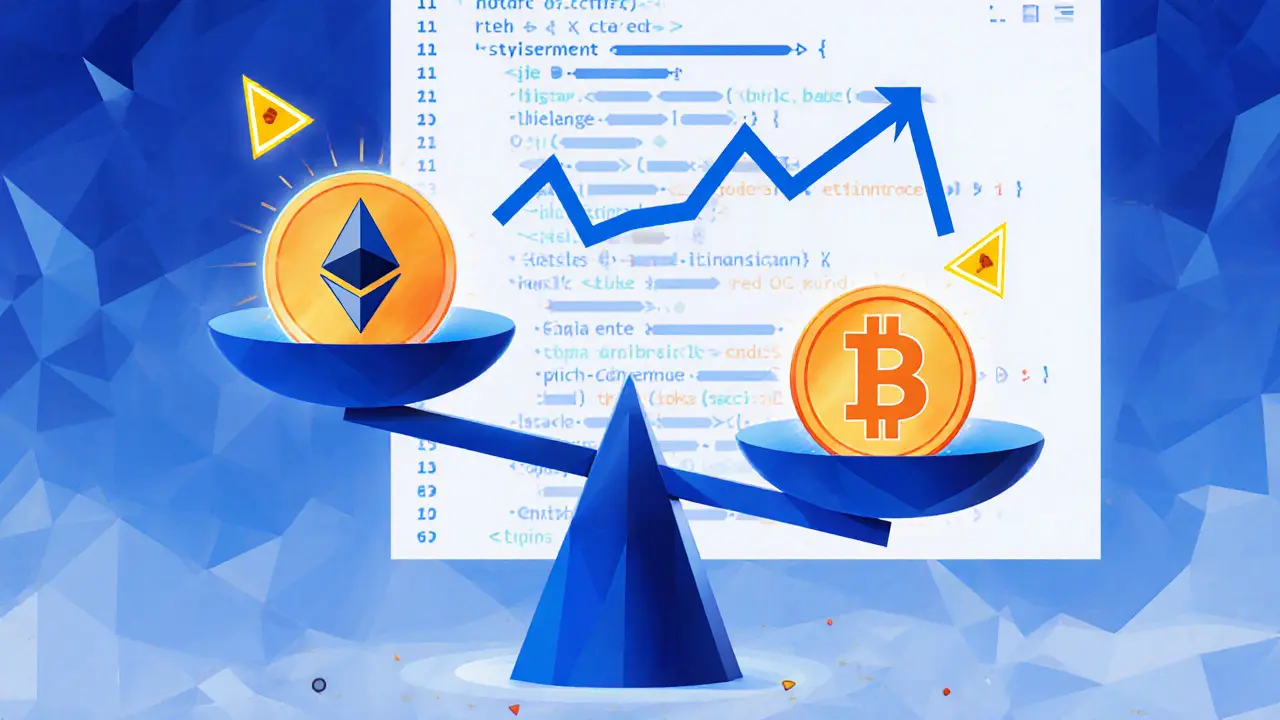Impermanent Loss Calculator
Calculate how price changes affect your liquidity pool position compared to simply holding your tokens. This tool demonstrates the concept of impermanent loss explained in the article.
Your Results
If you had held: You'd have $
In liquidity pool: You'd have $
Impermanent loss: $ ()
Note: This is a simplified calculation. Real DeFi pools may have additional fees, slippage, and other factors affecting your actual returns.
What Are Liquidity Pools and Why Do They Matter?
Liquidity pools are the backbone of decentralized exchanges like Uniswap, SushiSwap, and Curve. Instead of relying on buyers and sellers to match orders, these pools use smart contracts to hold pairs of crypto tokens-like ETH/USDC or WBTC/DAI-and let users trade directly against them. Anyone can contribute tokens to a pool and become a liquidity provider (LP), earning a share of trading fees in return. It sounds simple: deposit tokens, collect fees, walk away. But that’s where most people get burned.
The Hidden Cost: Impermanent Loss
Impermanent loss isn’t a bug-it’s a feature of how automated market makers (AMMs) work. When you add equal values of two tokens to a pool, the system keeps their ratio balanced. If one token’s price doubles while the other stays flat, the pool automatically sells some of the rising token to buy more of the flat one, keeping the ratio 50/50 by value. That means you end up holding more of the token that lost value and less of the one that gained.
Let’s say you put in 1 ETH and 2,000 USDC when ETH is $2,000. If ETH spikes to $4,000, you could’ve held onto that ETH and made $2,000 in profit. But because the pool rebalanced, you now have less ETH and more USDC. Even if ETH returns to $2,000, you still lost value compared to just holding. The loss is called "impermanent" because if prices return to their original levels, you break even. But in crypto, prices rarely return. More often, the loss becomes permanent.
Stablecoin pairs like USDC/DAI have almost no impermanent loss because their values don’t swing. That’s why most experienced LPs start there before risking volatile pairs. Pools with one stablecoin-like ETH/USDC-are less risky than ETH/WBTC or SOL/AVAX.
Smart Contracts Can Break-And When They Do, Your Money Vanishes
There’s no bank, no customer service, no reset button. Your funds are locked in code. If that code has a flaw, hackers can drain it. In 2022, a single bug in a DeFi protocol led to a $100 million exploit. In 2024, another project lost $45 million because its withdrawal function didn’t check user balances properly.
Most new DeFi projects skip audits or hire cheap firms to do them. Some even fake audit reports. Always check if a project has been audited by a reputable firm like CertiK, Trail of Bits, or OpenZeppelin. Look for the audit report on their website-not just a badge. Read the summary. If the audit says "medium risk" or lists unresolved issues, walk away.
Even audited contracts can fail. In 2023, a well-known DEX had a clean audit, but a new feature added three months later had a logic error. Hackers exploited it within 48 hours. Audits are a start, not a guarantee.

Rug Pulls Are Real-And They’re Getting Smarter
A rug pull isn’t just a scam. It’s a calculated exit. A team creates a new token, lists it on a DEX with a liquidity pool, and lures in investors with hype, fake partnerships, and inflated tokenomics. They add liquidity by depositing their own tokens alongside ETH or USDT. Once enough money flows in, they pull the plug.
How? They sell all their tokens into the pool, crashing the price. Then they withdraw the ETH or USDT they originally put in-leaving everyone else with worthless tokens. The liquidity pool gets drained, and the project disappears.
Red flags? Check who controls the liquidity. If the team holds more than 20% of the total supply and hasn’t locked it, they can pull the rug anytime. Use tools like TokenSniffer or DeFiLlama to see if liquidity is locked-and for how long. A 1-year lock is a good sign. A 1-day lock? That’s a warning light.
Concentrated Liquidity Isn’t Passive-It’s a Full-Time Job
Uniswap V3 changed the game by letting LPs set custom price ranges. Instead of spreading your funds across a wide range, you can concentrate them between $1,800 and $2,200 for ETH. This boosts your fee earnings-up to 4,000% more in some cases.
But here’s the catch: if ETH moves outside your range, you stop earning fees. You’re not just a provider-you’re a market maker. You need to monitor prices, adjust ranges, and pay gas fees every time you rebalance. One move can cost $50 in Ethereum gas. If you’re doing this weekly, you’re spending hundreds a month.
Most beginners think concentrated liquidity is "higher yield" and jump in. They don’t realize they’re now running a mini-trading bot with no automation. If you’re not actively managing your positions, you’re better off with a standard pool.

Gas Fees and Network Costs Add Up
Every time you deposit, withdraw, or rebalance a position, you pay gas. On Ethereum, that’s often $10-$50 per transaction. On other chains like Arbitrum or Polygon, it’s cheaper-but still not free. If you’re frequently adjusting your liquidity range, those fees eat into your profits fast.
Some LPs end up losing money on fees alone. One user reported earning $120 in fees over a month but paying $180 in gas to rebalance. Net loss. That’s not investing-that’s paying to play.
How to Protect Yourself
- Start with stablecoin pairs-USDC/DAI, USDT/USDC. Impermanent loss is near zero.
- Only use audited protocols-check the audit report, not just the logo.
- Lock liquidity-if the team didn’t lock their tokens, don’t trust them.
- Avoid new tokens-if it’s not on CoinGecko or CoinMarketCap, it’s too risky.
- Don’t chase high APYs-if a pool offers 100% APY, it’s either a scam or about to collapse.
- Use small amounts-treat liquidity provision like gambling. Only risk what you can afford to lose.
Is Liquidity Provision Worth It?
Yes-if you treat it like active trading, not passive income. The best LPs aren’t just depositing tokens. They’re watching markets, adjusting ranges, tracking audits, and avoiding risky tokens. They make money not because they’re lucky, but because they’re disciplined.
For most people, the risks outweigh the rewards. If you’re not ready to monitor your positions, study token teams, and understand gas costs, stick to holding ETH or stablecoins. The fees you earn from liquidity pools aren’t free money. They’re payment for taking on serious, often invisible, risks.
What is impermanent loss and why is it called "impermanent"?
Impermanent loss happens when the price of tokens in a liquidity pool changes compared to when you deposited them. The AMM rebalances the pool to keep the ratio equal, which can leave you with more of the token that dropped in value. It’s called "impermanent" because if prices return to their original levels, you break even. But in crypto, prices rarely return. Once you withdraw, the loss becomes permanent.
Can you lose all your money in a liquidity pool?
Yes. If the smart contract has a critical bug, hackers can drain the pool. If it’s a rug pull, the team can sell all the tokens and withdraw the paired assets, leaving you with worthless coins. Even without scams, extreme volatility can cause impermanent loss so severe that your position is worth less than your initial deposit.
Are stablecoin liquidity pools safe?
They’re the safest option in DeFi. Because stablecoins like USDC and DAI are pegged to the dollar, their prices rarely move. That means impermanent loss is nearly zero. But they’re not risk-free. Smart contract bugs and rug pulls can still happen. Always check audits and liquidity locks-even for stablecoin pools.
How do I know if a liquidity pool is a rug pull?
Look for three things: 1) Is the team’s wallet holding a large portion of the token supply? 2) Has that supply been locked? Use DeFiLlama to check. 3) Is the project on major tracking sites like CoinGecko? If the answer to any is no, it’s likely a rug pull. Also, check the liquidity pool’s history-if the paired asset (like ETH) suddenly drops while the new token crashes, that’s a classic sign.
Should I use concentrated liquidity pools as a beginner?
No. Concentrated liquidity requires constant monitoring, market knowledge, and frequent transactions. Each adjustment costs gas, and being out of range means zero fees. Beginners should start with standard, full-range pools on trusted platforms like Uniswap V2 or Curve. Once you understand how prices move and how fees work, you can experiment with concentrated positions.

Steven Lam
November 6, 2025 AT 02:57Noah Roelofsn
November 7, 2025 AT 07:59Sierra Rustami
November 8, 2025 AT 13:03Christopher Evans
November 9, 2025 AT 09:11Ryan McCarthy
November 10, 2025 AT 11:54Abelard Rocker
November 12, 2025 AT 01:59Hope Aubrey
November 13, 2025 AT 01:32andrew seeby
November 13, 2025 AT 14:55Pranjali Dattatraya Upadhye
November 13, 2025 AT 20:01Kyung-Ran Koh
November 14, 2025 AT 05:14Cydney Proctor
November 15, 2025 AT 13:08Cierra Ivery
November 16, 2025 AT 08:23Veeramani maran
November 17, 2025 AT 23:21Kevin Mann
November 19, 2025 AT 16:44Kathy Ruff
November 20, 2025 AT 22:52Robin Hilton
November 22, 2025 AT 21:37Grace Huegel
November 23, 2025 AT 07:02Nitesh Bandgar
November 24, 2025 AT 11:42Jessica Arnold
November 25, 2025 AT 22:15Arjun Ullas
November 26, 2025 AT 19:21